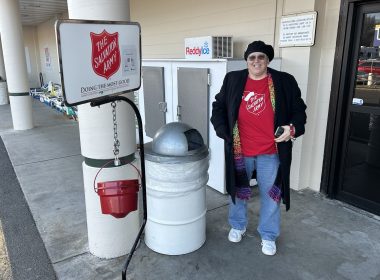What if there was a way to know what neighborhoods are at risk of less-affordable housing options in the future?
That’s the aim of the Good Neighbors Index (GNI), a data-driven tool designed by the think tank American Enterprise Institute for Public Policy Research (AEI) in collaboration with The Salvation Army.
With periodically updated data, the GNI reveals that increased displacement pressures are linked to higher displacement rates, ultimately contributing to chronic homelessness.
By identifying displacement pressures, like housing costs that exceed median incomes, AEI’s data and tools help leaders and advocates understand homelessness in their area. This information can guide zoning decisions, foster a community mindset and inform policy and funding initiatives to tackle the root causes of homelessness.
Introducing the Good Neighbors Index
“We see more people needing housing solutions due to historic rising housing pressures,” said Major Ethan Frizzell, The Salvation Army Fort Myers (Florida) Area Commander, Corps Officer and AEI Catalyst Analyzer. “Housing prices have increased by more than 50 percent across the nation since 2019.”
Frizzell tours the U.S. and presents with AEI housing experts, stopping in cities such as Denver, San Diego and Houston, where The Salvation Army is already involved in homeless initiatives.
According to Frizzell, regularly updated data and analysis, along with adjusted narratives, encourage community members to adopt a “good neighbor” mindset and view individuals experiencing homelessness as their neighbor capable of returning to stable housing within their community.
“The Good Neighbors success sequence is about seeing neighbors as the narrative,” Frizzell said. “This is done by recognizing housing loss, pressure and the cost of housing entry.”

When utilizing the GNI, individuals can pinpoint local zoning options that may increase housing affordability by entering a city and specifying an area. In zones with permitted zoning laws, advocates can encourage middle housing accommodating multiple families instead of one large single-family home.
Frizzell said the approach was successfully implemented in Houston, resulting in gradual improvements in affordability and increased availability of housing for individuals who might otherwise lack access.
“It’s become apparent that mayors play a significant role in reducing displacement within cities,” he said. “With effective foresight through local forecasting, we can improve the homeless situation.”
In optimal scenarios, Frizzell said individuals utilize the data and information from AEI to initiate discussions and informed debates regarding the necessity for affordable and plentiful housing options.
He said he has seen the successful use of the data nationwide.
“Asheville, North Carolina, Miami and Houston have used the tool to recognize increased housing pressure,” Frizzell said.
He said the information enhances arguments for support when social services become stretched due to increased demand, and notably, getting ahead of the situation can lead to additional grants or funding needed to operate programs.
Tools for success: Life Navigation Coaching (LIFNAV)
Another tool to help communities? Life Navigation Coaching (LIFNAV), a framework developed by The Salvation Army through which individuals receive life coaching and resources to overcome obstacles and find pathways to stable housing.
Built on the philosophy of The Salvation Army Pathway of Hope program that focuses on core causes rather than symptoms, LIFNAV aims to engage, empower and equip those in need of housing assistance. The initiative provides direct assistance and support to individuals living on the streets, aiding them in finding stable housing.
“The Good Neighbors success sequence is about seeing neighbors as the narrative. This is done by recognizing housing loss, pressure and the cost of housing entry.”
Major Ethan Frizzell, The Salvation Army Fort Myers (Florida) Area Commander, Corps Officer and AEI Catalyst Analyzer
According to Frizzell, Salvation Army Commands in Leesburg, Florida; the Houston area; and the Nashville area have successfully incorporated LIFNAV into their programs.
“The partnership between AEI and The Salvation Army, through tools like the GNI and LIFNAV, is making significant strides in transforming how communities address homelessness,” he said.
In Denver, the LIFNAV framework has been adopted and integrated into its approach to serving individuals experiencing homelessness through the Pathway of Hope.
Major Richard Pease learned about LIFNAV and the GNI during a convening with Frizzell and decided to implement it in Denver when he was Divisional Secretary for Business and Denver Metro Coordinator.
“We took research and data presented by AEI and talked with community leaders, showed them that there was data that supported the idea that there was more to folks becoming homeless than just life choices,” Pease said.
Pease said one of the most valuable things about sharing AEI tools and incorporating them in The Salvation Army is that it sparks conversation.
“It positions us to be a thought leader in homelessness,” Pease said.
Do Good:
- See how The Salvation Army fights homelessness.
- How do we treat everyone with love and kindness, as if they were our neighbor? Get the Do Good Family Roadmap and take a 4-week journey for families in how to be a good neighbor. Follow the guide to see what the Bible says about the art of neighboring and take tangible steps together on your printable roadmap to be a caring, helpful, welcoming and supportive neighbor right where you are.













